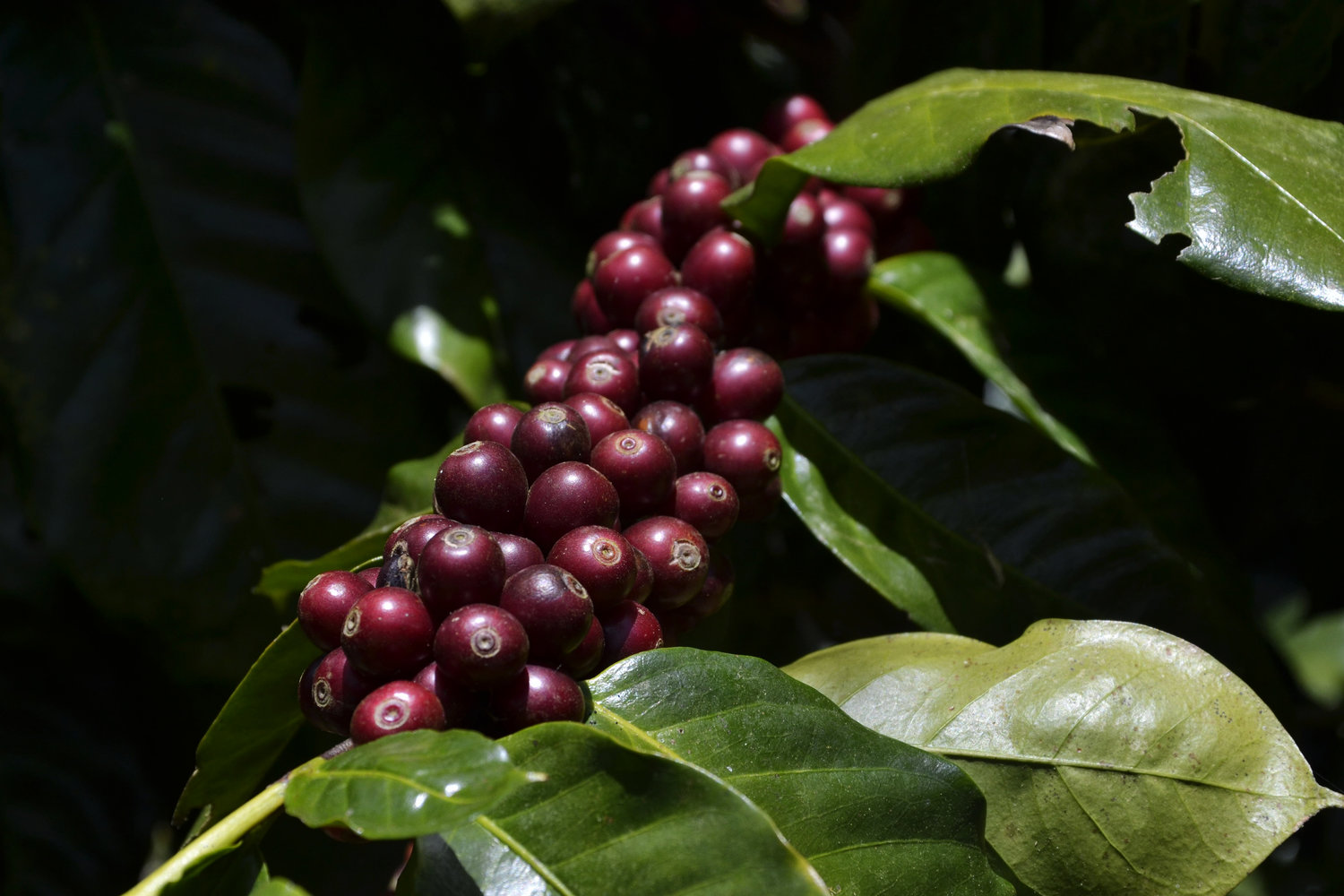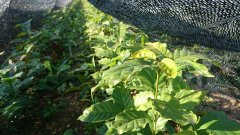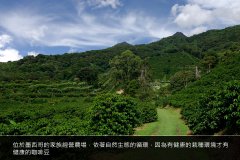Mexican coffee industry development history "magic country" tenacious southern coffee

For professional baristas, please follow the coffee workshop (Wechat official account cafe_style)
There is no way to grow coffee in the latitude and climate of the north, and coffee growing areas are all in the south. 90 per cent of Mexico's coffee comes from four southern provinces, Chiapas (35 per cent), Oaxaca (13 per cent), Puebla (15 per cent) and Veracruz (25 per cent). A total of nearly 500000 people are engaged in coffee cultivation, 70 per cent of whom are small farmers. Unlike Brazil, almost all coffee cultivation and processing rely on manual labor, and many coffees are organically cultivated. Mexico is one of the world's largest exporters of organic coffee, accounting for 60 per cent of global organic coffee production in 2000. Chiapas and Oaxaca, the two coffee provinces, are the poorest and most aboriginal areas in Mexico, with towering forests blocking traffic, different languages and races, and did not extricate the south from hardship after its colonial liberation from Spain.
Coffee arrived in Mexico very late. In the second half of the 18th century, Spanish immigrants brought coffee trees from Cuba and Dominica in the Caribbean, but it did not really grow coffee commercially until the 1790s, when Germans and Italians emigrated from Guatemala and Central and South America to Mexico, and Veracruz first appeared coffee plantations. Mexico has always maintained the tradition of small farmers. The agricultural reform after the Mexican revolution allowed aborigines and farmers to own small plots of agricultural land and be self-sufficient. The 1970s and 1980s were the golden age of Mexican coffee. In 1973, the Mexican National Coffee Institute (INMECAFE) was established to provide technical assistance to small farmers, loans, guaranteed acquisitions, and even in line with the international market. Coffee output increased, and even increased by 900% in some areas, which improved the social development of remote areas to a considerable extent.
Bananas and coffee are probably the most important economic products for other countries in the Caribbean and Central and South America, while Mexico is extremely rich in minerals. In Spanish colonial times, it was precious metals such as gold and silver, and in modern times, it was oil. Oil, industry and tourism are all far more important than coffee. Coffee growers in the south, mostly aborigines, are usually placed last, and it is the futures prices of London and New York that determine coffee prices on the world market. When the price of coffee is good, profits are monopolized by large multinational exporters, and when the price is not good, it is the farmers who suffer.
In 1989, the bad news finally arrived. as Brazil dumped low-priced coffee, international coffee prices plummeted, and INMECAFE, the last umbrella of Mexican small farmers, closed down, the coffee industry suffered a fatal blow. Coffee exports totaled US $880 million in 1985, but in 1991 there was only 370 million US dollars left. the price was so low that it was good not to grow coffee, but lost money on growing coffee, and coffee could not be sold at all. Farmers with no income had to make a living from immigrants from big cities and sneak into the United States, which opened the most miserable page for Mexican coffee farmers in the 1990s. While social and rural movements are surging in these areas, labor organizations also demand more workers' rights and interests, and indigenous peoples demand the land and resources that used to belong to them.
On January 1, 1994, the North American Free Trade area Agreement (NAFTA) between the United States and Mexico began to be implemented, and farmers roared. On the same day, a peasant riot broke out in Chiapas, the southernmost coffee province of Mexico. During the so-called Zapatista revolution, Mayan Indian farmers occupied San Cristabal de las Casas and confronted government forces. Although the uprising had limited casualties and soon subsided, the government signed a peace agreement with farmers. But the world has noticed the situation in Mexico's southern coffee province. The peasant leader who led the rebellion was called "Marcus" Subcomandante Marcos, whose true identity has not been known for two decades and is said to have been a university professor.
After the uprising, Fuentes said in an interview: "We in Mexico have always prided ourselves on being a multi-ethnic country with Indian ancestors, but we treat indigenous people in a very cruel way, depriving them of their land, destroying their culture and language, and forcing them to give up their autonomous communities." Fuentes points out that Mexico has 10 million Indians and 42 different languages, but in the province of Chiapas, they cannot even choose their own governor.
Like goalkeeper Guillermo 'Memo' OCHOA, Fuentes lived in France for some time and served as Mexican ambassador to France in 1975. But from the beginning of his first novel, he wrote about Mexico from different angles. Fuentes's father was a diplomat, and when he followed his father in Washington, he thought, "Mexico is an imaginary country." I thought my father was made up to tease me, so different from where I live. " But when Mexican President General Cardenas announced the nationalization of oil in 1938 and confiscated American oil fields in Mexico, little Carlos lost all his American friends at school overnight. He knew that he would always be Mexican, really Mexican. His Mexico is full of contradictions but also full of vitality, pungent and intense. Although Fuentes sympathizes with Chiapas's revolution, unlike many of his friends in the intellectual world, he still believes that NAFTA is necessary. "it's better to be part of the world stage than to be isolated from the outside world." Although American agriculture is cheap, maybe Mexican winter fruit can have a place in the American market?
After the collapse of INMECAFE, in order to resist the exploitation of coffee brokers, community spontaneous cooperatives sprang up. In order to avoid expensive fertilizers, they shared the knowledge of organic cultivation. The price of organic coffee was more stable than that of traditional coffee. Through the help of fair trade organizations, obtaining pre-harvest loans, step by step, southern coffee regained its vitality. In 2012, the Cup of Excellence Cup, which is already very common in Central and South America, finally began to be held in Mexico, although it was very late, but within two or three years, the world rediscovered the potential of Mexican coffee. In the 2014 Mexico extraordinary Cup, almost all the winners were arranged by Veracruz producing areas, which is very amazing.
But the threat is still in sight. Leaf rust has been found on Chiapas farms since October 2012, and since last year, the coffee killer has spread everywhere, causing a layer of yellow dust on the infected coffee leaves, leaving the whole tree unable to bear fruit. Leaf rust was also found in Veracruz, the second largest producing area, in February last year. The yield loss of large farms can be as high as 70%, but small farmers are even more miserable. Among the 180000 coffee farmers in the Chiapas area, 98% are indigenous farmers with less than 5 hectares of arable land. Once they are hit by leaf rust, the whole small farm is completely paralyzed, with no income at all, and the agricultural crisis immediately becomes a social crisis.
Important Notice :
前街咖啡 FrontStreet Coffee has moved to new addredd:
FrontStreet Coffee Address: 315,Donghua East Road,GuangZhou
Tel:020 38364473
- Prev

Columbia Coffee Hope Manor Super rare batch Bourbon rare Variety two-Color bourbon Flavor description
The exchange of professional baristas please follow the coffee workshop (Wechat official account cafe_style) Columbia Hope Manor two-color bourbon sun Colombia La Esperanza Bicolor Natural last year's coffee show at the raw bean merchant's cup test, a whole row of geisha and Pacamara, mixed with a bourbon. A most common breed. But after a round of drinking,
- Next

Story about the Origin of Organic Coffee beans in Mexico how organic coffee is grown in Mexico
Communication of professional baristas Please pay attention to the coffee workshop (Wechat official account cafe_style) Mexican organic coffee beans grow in a good shade environment, coffee particles are larger, compared with other coffee beans, it is more fragrant and delicious, with sweet fruit taste. The taste gives people a simple, elegant and sweet flavor. Organic certification: Stell, an international certification body
Related
- Detailed explanation of Jadeite planting Land in Panamanian Jadeite Manor introduction to the grading system of Jadeite competitive bidding, Red bid, Green bid and Rose Summer
- Story of Coffee planting in Brenka region of Costa Rica Stonehenge Manor anaerobic heavy honey treatment of flavor mouth
- What's on the barrel of Blue Mountain Coffee beans?
- Can American coffee also pull flowers? How to use hot American style to pull out a good-looking pattern?
- Can you make a cold extract with coffee beans? What is the right proportion for cold-extracted coffee formula?
- Indonesian PWN Gold Mandrine Coffee Origin Features Flavor How to Chong? Mandolin coffee is American.
- A brief introduction to the flavor characteristics of Brazilian yellow bourbon coffee beans
- What is the effect of different water quality on the flavor of cold-extracted coffee? What kind of water is best for brewing coffee?
- Why do you think of Rose Summer whenever you mention Panamanian coffee?
- Introduction to the characteristics of authentic blue mountain coffee bean producing areas? What is the CIB Coffee Authority in Jamaica?

